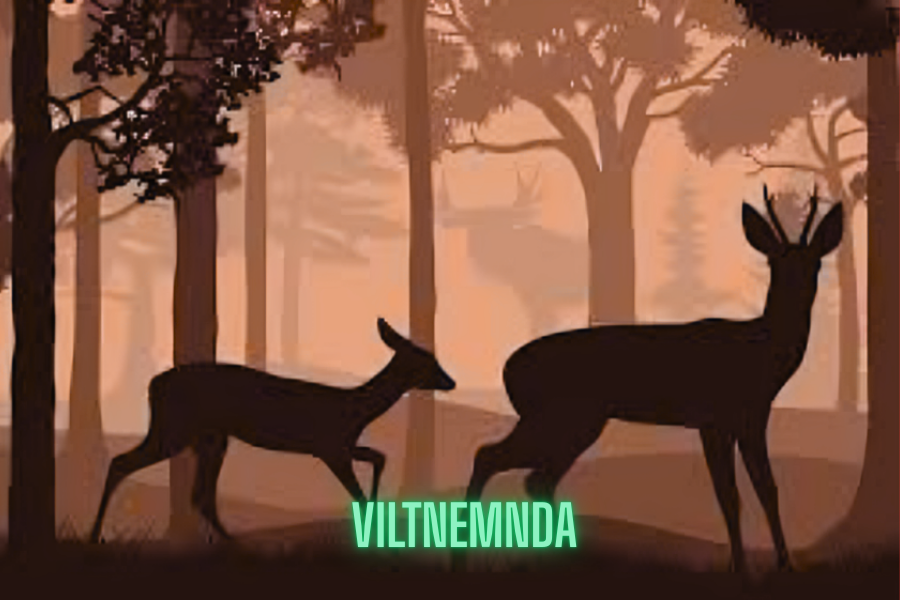If you’ve ever wondered who shows up in Norway when a moose limps across a highway, who decides how many deer can be harvested in a valley, or who mediates when beavers flood a farm road, the answer often traces back to Viltnemnda—the municipal wildlife board. For an American reader, think of Viltnemnda as a local, legally mandated committee that blends duties you might associate with a county commission, a state wildlife agency, and even volunteer search-and-rescue teams.
This guide explains what Viltnemnda does, the laws that shape its work, how hunting and wildlife management are coordinated, and what the public can expect when wildlife and people collide—literally and figuratively.
Quick Information Table
| Data Point | Detail |
| Role Focus | Municipal wildlife response & management (Viltnemnda) |
| Typical Experience Window | 8–15 seasons managing moose/deer, beaver, and geese conflicts |
| Peak Workload | September–November (rut and primary hunting season) |
| Core Legal Framework | Viltloven (Wildlife Act, 1981); Naturmangfoldloven (Nature Diversity Act, 2009) |
| Primary Partners | Police, road authorities, hunters’ associations, landowners |
| Common Field Missions | Traffic-collision follow-ups, injured game dispatch, nuisance permits |
| Routine Data Inputs | Harvest stats, collision registers, landowner reports, camera traps |
| Most Frequent Permits | Beaver dam interventions; emergency culls for severely injured ungulates |
What Viltnemnda Is—and Why It Matters
At its core, Viltnemnda is the municipality’s wildlife board, empowered under national law to handle local wildlife management where people live, drive, and farm. Its responsibilities stretch across three major roles:
- Problem-solver – It coordinates emergency responses to injured or dangerous wild animals, protecting public safety while minimizing animal suffering.
- Manager – It helps shape long-term wildlife population outcomes by reviewing harvest data, approving quotas, and ensuring balanced ecosystems.
- Convener – It brings together key partners—police, hunters, landowners, and road authorities—to make quick calls during crises and measured decisions between hunting seasons.
In short, Viltnemnda embodies Norway’s approach to wildlife governance: local, data-driven, and deeply intertwined with both law and community needs.
The Legal Backbone: How Norwegian Law Frames the Board
Norway’s wildlife governance is built on two major legislative pillars:
- Viltloven (The Wildlife Act, 1981): This law establishes that wild animals are owned by the state, not private landowners. It regulates hunting seasons, culling rights, and humane dispatch rules. Municipalities, through Viltnemnda, operate within this framework.
- Naturmangfoldloven (The Nature Diversity Act, 2009): This act requires decisions to be knowledge-based and precautionary. Every decision must weigh biological data, ecosystem impacts, and long-term sustainability.
Other rules also intersect. For example, police enforce public-safety mandates, while municipalities implement field-level responses. Together, these laws ensure that every action—whether dispatching an injured deer or approving a beaver cull—fits within national conservation and animal-welfare goals.
Responsibilities in Practice: The Three Pillars
Viltnemnda’s duties can be grouped into three main categories:
- Population Stewardship
- Reviewing annual harvest reports.
- Advising on quotas for moose and deer.
- Approving or adjusting bestandsplaner (multi-year herd management plans).
- Ensuring herds remain healthy, huntable, and ecologically balanced.
- Reviewing annual harvest reports.
- Damage Prevention and Conflict Mitigation
- Addressing beaver flooding of roads, geese grazing on crops, or deer invading gardens.
- Implementing solutions that range from fencing and deterrence to targeted culls.
- Addressing beaver flooding of roads, geese grazing on crops, or deer invading gardens.
- Public-Safety Response
- Handling wildlife-vehicle collisions.
- Dispatching injured animals humanely.
- Responding to large ungulates (like moose) wandering into neighborhoods.
- Handling wildlife-vehicle collisions.
Hunting and Quotas: How Decisions Get Made
Hunting in Norway is highly structured, blending traditional rights with modern science. The process works like this:
- Bestandsplaner: Landowners and hunting teams propose multi-year herd plans, including goals for population size and harvest strategies.
- Review: Viltnemnda reviews these plans against municipal objectives, biological data, and road safety concerns.
- Annual Quotas: Approved plans are translated into specific quotas—how many animals, of which sex and age classes, can be harvested.
- Monitoring: Hunters report results in detail (sex, age, weight). Sometimes jawbones or antlers are collected for age verification.
- Feedback Loop: These data feed into the next season’s decisions, ensuring quotas remain adaptable and evidence-based.
Collisions and Injured Game: What Happens and Who to Call
Collisions between vehicles and wildlife are unfortunately common in Norway. The response process is precise:
- First call: Always to the police. They log the incident and alert the wildlife response team.
- Activation: Viltnemnda mobilizes trained trackers and dog handlers.
- Fieldwork: The team follows tracks or blood trails, assesses injury severity, and decides on humane dispatch or veterinary treatment.
- Documentation: Every case is logged—location, species, age, sex, and outcome—for collision registers.
Public’s role in a collision
- Move to safety and call the police.
- Do not pursue or approach the animal.
- If safe, mark the last seen point with a visible object.
- Provide clear details and stay available for follow-up.
Permits for Nuisance Wildlife and Urban Conflicts
Viltnemnda often handles permit requests for nuisance situations. The process emphasizes ethics and proportionality:
- Non-lethal first: Flow devices in beaver dams, fencing, or scaring geese are prioritized.
- Lethal options: Approved only when damage is serious or public safety is at risk.
- Documentation: Applicants must show attempted deterrents, provide evidence of damage, and accept monitoring conditions.
This ensures that lethal control remains the exception, not the rule.
Data and Technology: Why Evidence Drives Every Decision
Norwegian wildlife management is remarkably data-driven. Common inputs include:
- Harvest statistics: Age, sex, calf recruitment, hunting effort.
- Collision registers: Pinpoint high-risk road sections.
- Field technology: Camera traps, thermal drones, and citizen-science apps.
These data sources allow Viltnemnda to make transparent, knowledge-based decisions that stand up legally and scientifically.
Contacting Viltnemnda: How the Public and Landowners Engage
- Emergencies: Always call the police; they coordinate with the wildlife response team.
- Non-urgent conflicts: Contact the municipality’s environmental office.
- Hunting plans: Landowners and coordinators should engage early, bringing harvest data and observations to help shape quotas.
How Viltnemnda Compares to U.S. Systems
For U.S. readers, Viltnemnda feels like a hybrid of several American institutions:
- Like a state fish and wildlife agency, it manages game species under national laws.
- Like a county commission, it operates locally with strong ties to landowners.
- Like deer strike response units, it works with police and road authorities during collisions.
The biggest difference is the integration of landowner rights with public oversight. In Norway, hunting rights belong to landowners but are heavily regulated to serve broader conservation goals.
Ethics, Animal Welfare, and Professional Standards
Norway places a strong emphasis on humane and professional standards:
- Humane dispatch: Trained personnel ensure quick, ethical killing of injured animals.
- Competency requirements: Regular testing in marksmanship, tracking, and animal handling.
- Transparency: Every decision cites its legal basis and data sources.
This ethical framework helps maintain public trust in wildlife management.
Money, Liability, and Insurance: The Unseen Side
- Insurance claims: Vehicle damage from wildlife collisions is usually covered if reported properly with a police incident number.
- Municipal costs: Emergency responses are often funded by public budgets, while nuisance permits may involve landowner fees.
- Liability: Hunters or landowners who exceed permit conditions can face penalties under the Wildlife Act.
Myths and Expectations: Calibrating What “Management” Can Do
It’s important to keep expectations realistic:
- Management reduces risk, not eliminates it. Wildlife will still cross roads and fields.
- Culling isn’t a magic solution. Without habitat adjustments or traffic measures, local removals may only help temporarily.
- Better data means better outcomes. Public reporting and hunter cooperation directly improve decisions.
Conclusion: The Value of a Local, Law-Grounded Board
At its best, Viltnemnda is the local face of Norway’s wildlife promise: protecting biodiversity, supporting sustainable hunting, and keeping people safe where wild animals and human society intersect. Its authority springs from national law, its legitimacy from transparent, data-informed decisions, and its effectiveness from close coordination with police, hunters, landowners, and road authorities.
For American readers, picture a county-level wildlife task force with legal authority, ecological expertise, and trained responders—ready to act at any moment. That’s Viltnemnda in a nutshell.
When wildlife and people collide, the most humane and effective outcomes happen where law, science, and community partnerships meet.
Frequently Asked Questions (FAQs)
1) What exactly is Viltnemnda?
Viltnemnda is the municipal wildlife board in Norway, responsible for local wildlife responses and management. It coordinates emergency dispatch for injured animals, advises on hunting quotas, and issues permits for nuisance wildlife under national laws.
2) Who should I call after hitting a wild animal with my car in Norway?
Always call the police. They log the incident, ensure road safety, and alert the municipal wildlife response team.
3) How are hunting quotas decided?
Quotas come from bestandsplaner, multi-year herd plans proposed by landowners and hunters, reviewed by Viltnemnda against biological data and municipal goals.
4) Can Viltnemnda remove problem animals in towns or on private land?
Yes, but non-lethal measures come first. Lethal control is only allowed when risk or damage is serious and must follow strict permit rules.
5) How does this compare to the United States?
It resembles a mix of U.S. county commissions and state wildlife agencies. National law sets the framework, while Viltnemnda handles day-to-day local management and collision response.



